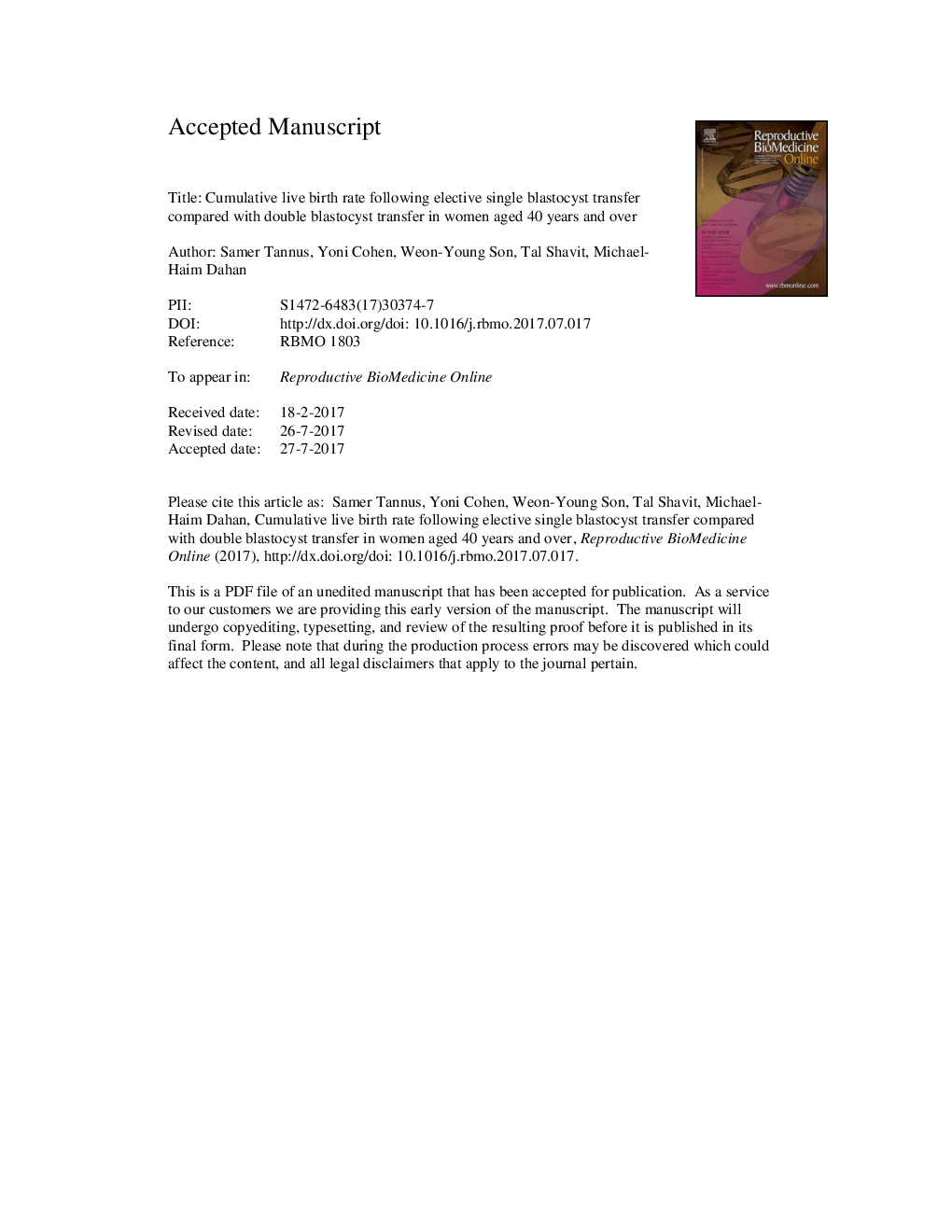| Article ID | Journal | Published Year | Pages | File Type |
|---|---|---|---|---|
| 8784129 | Reproductive BioMedicine Online | 2017 | 15 Pages |
Abstract
This retrospective cohort study aimed to identify predictive factors for live birth following blastocyst transfer in women aged 40-43, and to compare the cumulative live birth rate (LBR) following elective single blastocyst (eSBT) and double blastocyst (DBT) transfer. The study included 411 women who had fresh blastocyst transfers on day 5. In stepwise logistic regression, independent predictive factors for live birth were: transferring fully expanded blastocysts (Gardner stage â¥3) (odds ratio [OR] 3.5, 95% confidence interval [CI] 1.59-9.71) and transferring two blastocysts compared with a single blastocyst (OR 1.7, 95% CI 1.08-2.9). Maternal age was not found to be significant (OR 0.78, 95% CI 0.62-1.1). When comparing eSBT (n = 150) with DBT (n = 151), the DBT group achieved higher LBRs (26.5 versus 19.3%, P = 0.017) and higher multiple births (0 versus 17.5%, P = 0.02). However, the cumulative LBR was similar (28.0 versus 31.1%), with significantly lower multiple births in the eSBT group (0 versus 14.9%, P = 0.03). These results indicate that in women aged 40-43, when fully expanded blastocysts are achieved, maternal age is not a predictor for live birth, and eSBT can be performed without compromising cumulative LBRs.
Related Topics
Health Sciences
Medicine and Dentistry
Obstetrics, Gynecology and Women's Health
Authors
Samer Tannus, Yoni Cohen, Weon-Young Son, Tal Shavit, Michael-Haim Dahan,
